It’s no secret that, when it comes to home entertainment, we’re in the midst of a distribution revolution. Content once tied to broadcast airwaves is now being ravenously consumed on the internet via computers, video game consoles and set top devices.
TriplePoint has the privilege of working with some of these new media startups. PlayOn (which recently made the jump to iPhone; CNET link) streams Hulu and other web video onto PlayStation 3 and Xbox 360, without the need for a costly Hulu+ account. For those without a video game console, Softkinetic is providing a Microsoft Kinect-like experience to a massive install base via their set top box gesture recognition system.

With two cameras and a powerful microphone, Kinect knows who’s in front of the TV. For games like Dance Central, the technology will track all the poppin’ and lockin’ you can throw at it. But as an entertainment hub, a Kinect-enabled Xbox 360 will change the way that marketers convey their messages. Advertising is the backbone of media, providing the funding for programming and keeping content free for the viewer.
Softkinetic and Microsoft face a major challenge with these user-recognizing innovations. The product must find the right combination of allure, cost and ease-of-use, or at least hit two sides of this triangle. Kinect is rumored to cost $150, putting it well above the $99 impulse-buy sweet spot and closer to the price of a new game console. Softkinetic, on the other hand, will have less features but will also enjoy wider adoption, since the system will piggyback onto cable boxes and not require additional equipment.
As these devices become a fixture of the entertainment centers in dens and rec rooms around the world, ultra-targeted advertising will be commonplace. In order to frame this in a positive light, marketers will highlight the family-friendly aspects of these targeted ad systems. For instance, “No R-rated movie previews if children are detected,” or, similarly “no beer commercials until the registered account holder turns 21.” Of course, there are many aspects of these targeted ads that appeal to advertisers, too. For instance, gender-specific commercials can now be tied to the actual gender of the viewers, rather than the network making educated guesses about the viewing audience based on the channel, program and time of day
Interactive ads are not far behind. Many of today’s preroll web video ads ask if you’d prefer to interrupt your show with 3 traditional thirty-second commercials, or watch a 90 second long-form ad before the show begins. By giving the viewer a choice, marketers engage the audience and have a better change of holding their attention.
With mics and 3D cameras in place, these ads will evolve into mini-games – how many on-screen Pepsi bubbles can you “pop” by waving your hands, before the time runs out? Sponsored gameshow-style quizzes are also possible, since the systems can detect multiple voices in the room. First one to finish this jingle gets 10 points on their gamerscore! “Plop plop, fizz fizz…”
Social media integration is already built into modern game consoles. In the future, before the new Top Chef episode streams, you’ll be prompted to invite other online friends who ‘like’ that show on Facebook to join you and watch together, virtually.
During the show, ads will feature music by artists from your Last.fm account that you’ve “favorited.” Local advertisements will pinpoint your self-identified exact location and give you offers that are relevant to your tastes. For instance, the Italian restaurant below your apartment is offering double-pepperoni for the price of cheese, and they’ll be open for another 45 minutes. Since your credit card is on file with your Xbox Live or PSN account, you can literally say the word and have hot pizza at your door before Padma calls the chef’testants to the judge’s table. Are you watching solo, or did you invite the whole gang over? Accordingly, you’ll get promotions ranging from personal-pan pizza to the ultra-jumbo feast.
There’s a great deal riding on the success of these gesture- and user- recognition systems. Their main strength is in eliminating the “input middleman,” giving users greater control over their own entertainment. They also give marketers new ways to reach consumers. While this new technology is exciting on many levels, it will also present unseen obstacles and take years before adoption is truly mainstream. Only time will tell if the universal remote can survive this Minority Report future.




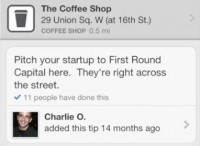
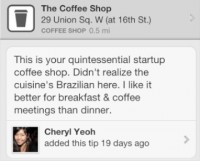



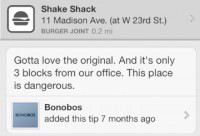

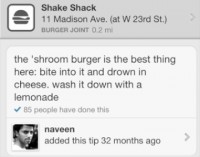
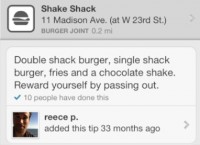

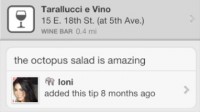


 Michele Steele is a Chicago-native who now lives in New York City and works as a reporter for Bloomberg TV. A graduate of Columbia Journalism School, Michele quickly made a name for herself as a reporter on the floor of the New York Stock Exchange, covering stocks and the economy for over 100 local stations which broadcast Bloomberg business reports. Now focusing primarily on the business of media, tech and entertainment, you can see Michele on Bloomberg Television segments worldwide.
Michele Steele is a Chicago-native who now lives in New York City and works as a reporter for Bloomberg TV. A graduate of Columbia Journalism School, Michele quickly made a name for herself as a reporter on the floor of the New York Stock Exchange, covering stocks and the economy for over 100 local stations which broadcast Bloomberg business reports. Now focusing primarily on the business of media, tech and entertainment, you can see Michele on Bloomberg Television segments worldwide.